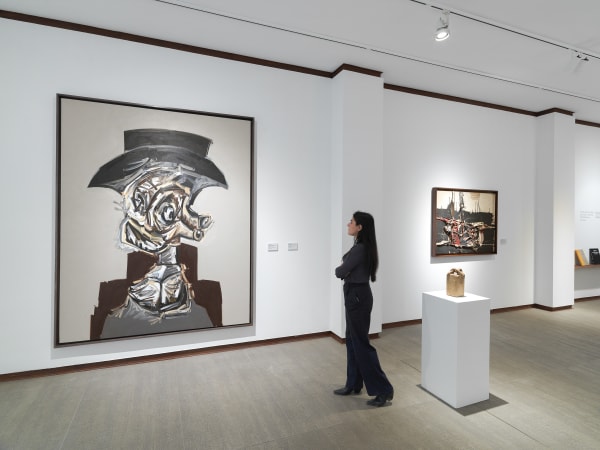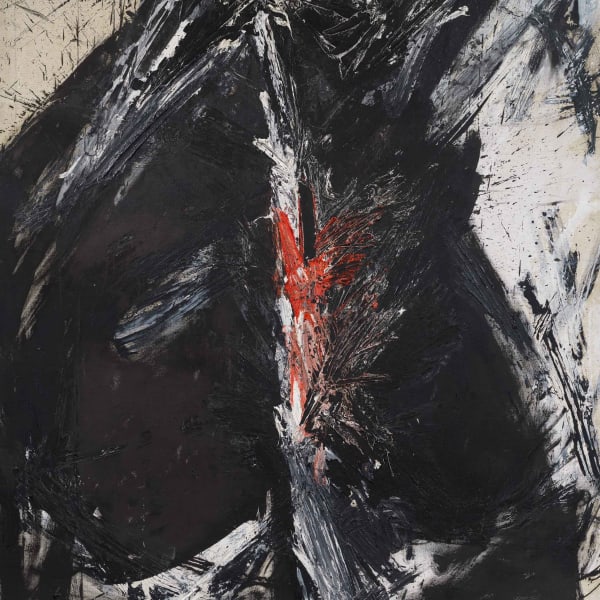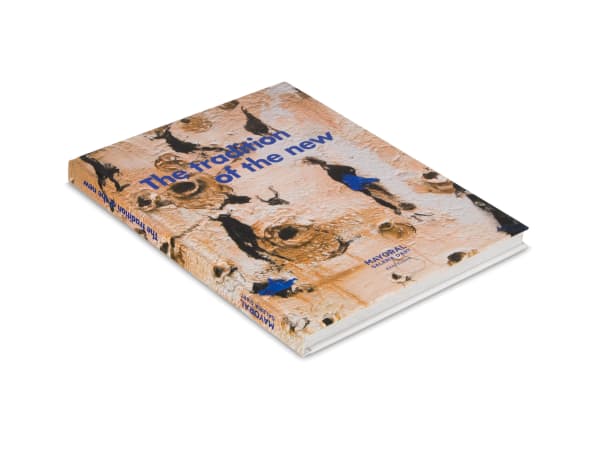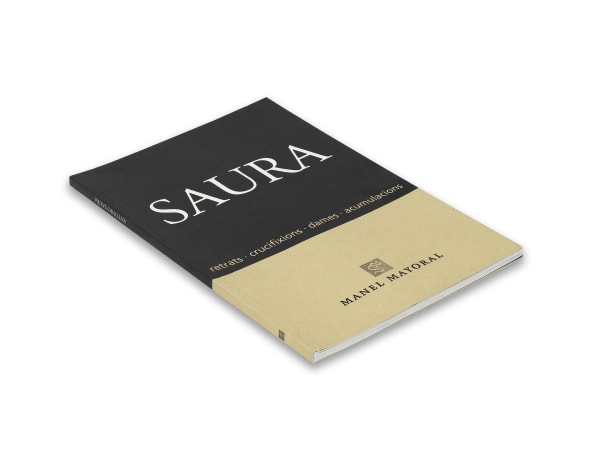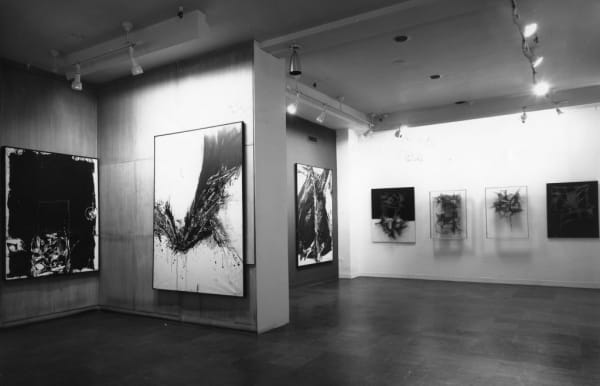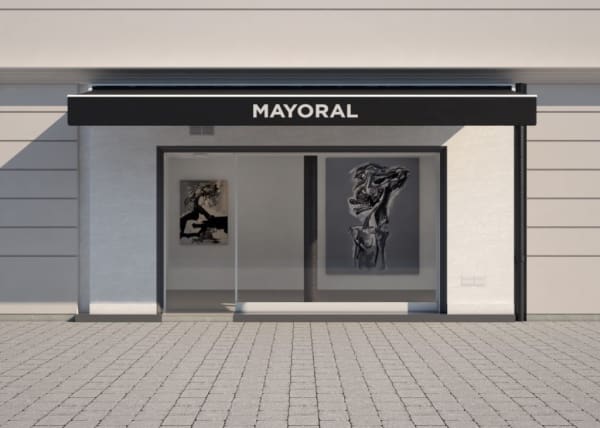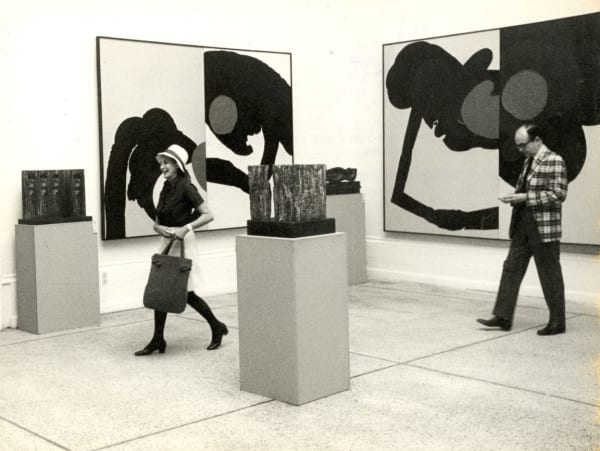Antonio Saura Huesca, 1930- Cuenca, 1998
Overview
"[...] the imperative need to cry out, to inundate surfaces and leave traces, to express oneself as if revealing the energetic possibilities of veing, to paint as a form of living, albeit through the amorous or destructive image of the female body, of a nothingless or of a whole, of a desperation or of a cosmic hunger, of a totality in expansion or of a concentric dynamic".- Antonio Saura
Antonio Saura was a prominent Spanish painter and sculptor known for his profound and provocative works that explored themes of human suffering, anguish, and existentialism. Saura's artistic journey began with figurative expressionism before evolving into a distinctive style characterized by bold brushstrokes, distorted figures, and a haunting use of black and white. Drawing inspiration from artists like Francisco Goya and Pablo Picasso, Saura's oeuvre often delved into the depths of the human psyche, reflecting his own personal struggles and the socio-political climate of his time. Through his powerful visual language, Saura's art sought to confront and challenge viewers, leaving an indelible mark on the Spanish art scene and establishing him as a revered figure in modern art history.
Works
Biography
Antonio Saura (Huesca, 1930 – Cuenca, 1998) was a renowned Spanish painter and writer, best known for his contributions to the art movement known as Informalism. Mostly self-taught, Saura began painting and writing at the age of 15 while undergoing five years of confinement due to tuberculosis.
In his youth, Saura initially pursued studies in law, but his passion for art led him to abandon his legal career and move to Madrid in the early 1950s. There, he immersed himself in the vibrant art scene and began to experiment with different styles and techniques. Influenced by the works of Francisco Goya, Pablo Picasso, and Joan Miró, Saura developed a distinctive artistic style characterized by its expressive and abstract nature. In 1957, Saura became associated with the group El Paso, together with the critic José Ayllón and the artists Rafael Canogar, Luis Feito, Manolo Millares, Manuel Rivera, Juana Francés, Pablo Serrano, and Antonio Suárez, a collective of Spanish artists who sought to break away from the traditional and academic art of the time. This association further fueled Saura's exploration of abstraction and expressionism. His early works often featured distorted figures and bold, gestural brushstrokes, reflecting his interest in the human condition and the existential themes that permeated his art.
As Saura's career progressed, he began to incorporate more social and political commentary into his works. His paintings often reflected his concern for the human condition, focusing on themes such as war, violence, and the inherent contradictions of human existence. Saura's art became a powerful vehicle for expressing his critique of societal issues and the human psyche. In addition to his work as a painter, Saura was also a talented writer and poet. He published several books throughout his career, delving into topics related to art theory and philosophy. Saura's writings offered valuable insights into his artistic process and provided a deeper understanding of his creative vision.
Antonio Saura's artistic contributions earned him international recognition and acclaim. His works have been exhibited in major galleries and museums around the world, including the Museum of Modern Art (MoMA) in New York, the Centre Pompidou in Paris, and the Reina Sofia Museum in Madrid.
Exhibitions
-

EXPLOSION
BARCELONA 11 Jan - 26 Mar 2024Mayoral brings together works by Joan Miró, Antonio Saura, Equipo Crónica, Eulàlia Grau, Antoni Tàpies, Manolo Millares, and Juana Francés presented through the gaze of two explosive scenes from Michelangelo...Read more -

Saura & Picasso. The weight of history
PARIS 9 Jan - 28 Feb 2024Under the curatorship of Kosme de Barañano, we are presenting an exhibition in Paris dedicated to the artist Antonio Saura (Huesca, 1930 - Cuenca, 1998), underlining the importance of Pablo...Read more -

Saura in his context
BARCELONA 13 Apr - 30 Jun 2023This exhibition, organized in conjunction with Enrique Juncosa, presents six very characteristic works by Antonio Saura (1930-1998), one of the most important Spanish artists of the 20th century, in dialogue...Read more -

An Hommage to Pierre Matisse
BARCELONA 27 Jan - 12 Apr 2022Mayoral presents an exhibition in celebration of Pierre Matisse, one of the most important modern art dealers in the world, who enabled certain Spanish post-war avant-garde artists to achieve recognition...Read more
-

An Hommage to Pierre Matisse
PARIS 15 Sep - 11 Dec 2021Mayoral presents an exhibition in celebration of Pierre Matisse, one of the most important modern art dealers in the world, illustrating how he enabled certain Spanish post-war avant-garde artists to...Read more -

Zóbel and the Great Post-War Generation
MADRID 12 - 21 Mar 2021Mayoral’s first exhibition in Madrid, ‘Zóbel and The Great Post-War Generation’, will be held from the 11th to 21st March at the Fundación PONS. The exhibition brings together more than...Read more -

Saura. Brigitte Bardot et Autres Dames
PARIS 22 Nov 2019 - 1 Feb 2020Mayoral is delighted to open a new gallery in Paris with an exhibition devoted to Antonio Saura, 'Brigitte Bardot et autres dames'. Curated by art informel expert Martine Heredia, the...Read more -

Venezia 1958
BARCELONA 26 Sep - 4 Dec 2019The Galeria Mayoral revisits an exhibition held in the Spanish Pavilion at the 1958 Venice Biennale. This is the first time an exhibition reunites, more than 60 years after the...Read more
-

With Rebellion Awareness is Born
BARCELONA 26 Sep 2018 - 5 Jan 2019Mayoral is pleased to present the exhibition With Rebellion, Awareness Is Born, a look at Spanish art of the postwar period which includes a painstaking selection of works by Rafael...Read more -

Saura. Tragedy & Creation
BARCELONA 26 Apr - 25 Jul 2018Mayoral is proud to present the exhibition 'Saura: Tragedy & Creation', which echoes the first retrospective we mounted in 2005. The show consists of fifteen works created by Antonio Saura,...Read more -

Postwar Art in Spain
LONDON 26 Feb - 8 Mar 2018We are pleased and proud to present this exhibition on the art of the Spanish postwar years, featuring exceptional works by Brossa, Feito, Millares, Saura and Tàpies, in London. It...Read more
Publications
-

Venezia 1958
2019Hardcover, 198 pagesRead more
Publisher: Mayoral Investigació
Dimensions: 31,5 x 23,5 cm -
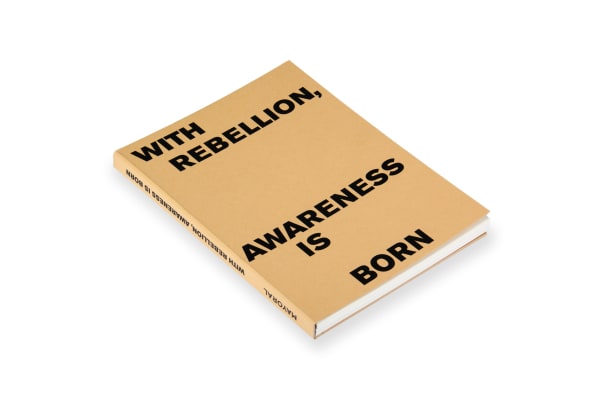
With rebellion awareness is born
2018Hardcover, 120 pagesRead more
Publisher: Mayoral Investigació
Dimensions: 23,5 x 17 cm -
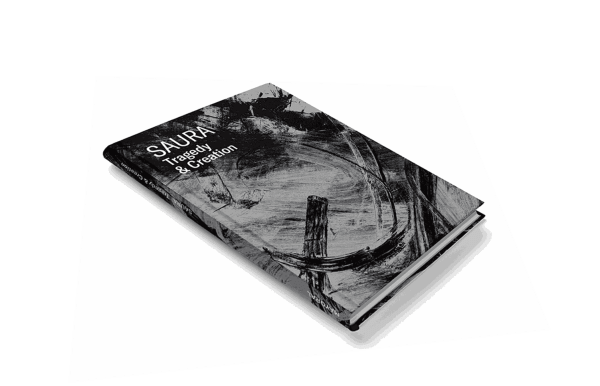
Saura
Tragedy & Creation 2018Hardcover, 103 pagesRead more
Publisher: Mayoral Investigació
Dimensions: 60x30 cm -
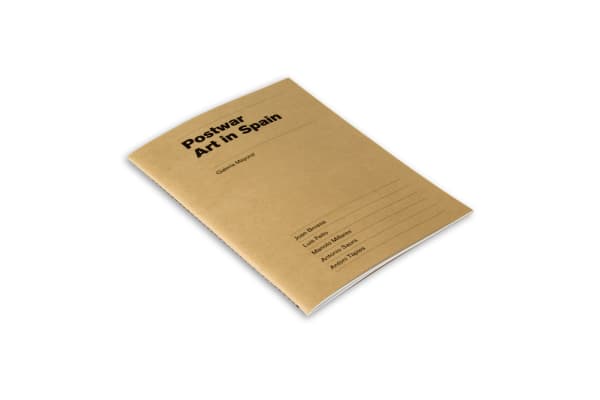
Postwar art in Spain
2018Softcover, 21 pagesRead more
Publisher: Mayoral Investigació
Dimensions: 21 x 14.9 cm
News
-

Un hommage à Pierre Matisse : une conversation entre Claudine Grammont et Elise Lammer modérée par Siân Folley
Claudine Grammont, Elise Lammer and Siân Folley talks about the exhibition "Un hommage à Pierre Matisse" at Galeria Mayoral, Paris November 19, 2021An Hommage to Pierre Matisse, Galeria Mayoral, Mayoral, Barcelona, Paris, Tàpies, Miró, millares, Canogar, Rivera, Saura, ExhibitiomRead more -

Pierre Matisse and the Spanish avant-garde | Elise Lammer
Elise Lammer, curator of "Pierre Matisse and the Spanish avant-garde" talks about the exhibition at Galleria Mayoral, Paris-Barcelona September 11, 2021It is not rare today to witness the same artist evolving across multiple galleries over the course of their career. Typically an artist would enter...Read more -

SAURA. Brigitte Bardot et autres dames|Martine Heredia
Martine Heredia, curator of "Brigitte Bardot et autres dames" talks about the exhibition at Galeria Mayoral, Paris November 26, 2019Antonio Saura, like Picasso, makes of the figure of the woman less a theme of predilection than a field of research. From 1954 on he...Read more -

New gallery in Paris
Galeria Mayoral opens a new gallery in Paris with an exhibition of Antonio Saura November 22, 2019Mayoral opens a new gallery in Paris with an Antonio Saura exhibition The gallery will develop curated shows that promote Spanish post-war artists and their...Read more -

A Conversation between Wilfredo Prieto and Rosa Lleó
On the occasion of the exhibition "Venezia 1958" at Galeria Mayoral, Barcelona October 31, 2019Mangos, Limes and Flags In 1958, Spain, like Portugal, was an insular, extremely poor country with a strong presence of the military and of Opus...Read more -

A Conversation between Pere Portabella and Vicenç Altaió
On the occasion of the exhibition "Venezia 1958" at Galeria Mayoral, Barcelona October 30, 2019We found ourselves in the dark night of the Franco dictatorship dominated by Castilianity and the cross: National Catholicism. A new generation, which hadn’t fought...Read more -

Bearing Witness to the 1958 Venice Biennale | Luis González Robles
Luis González Robles, curator of the Spanish Pavilion, speaks about the 29th Venice Biennale October 11, 2019Spanish Artists in the 29th Venice Biennale International Art Exhibition Spanish Pavilion, 1958 For this 29th Venice Biennale a series of works by artists representative...Read more -

On the 1958 Venice Biennale, Still | María Dolores Jiménez-Blanco
María Dolores Jiménez-Blanco talks about the 1958 Venice Biennale October 5, 2019The Spanish Pavilion at the 29th Venice Biennale, the edition held in 1958, has become an inevitable landmark in narratives to do with Spanish art...Read more -

With rebellion, awareness is born | Video
Video tour of the exhibition "With rebellion, awareness is born" at Galeria Mayoral, Barcelona November 21, 2018Mayoral is pleased to present the exhibition 'With rebellion', awareness is born, a look at Spanish art of the postwar period which includes a painstaking...Read more







